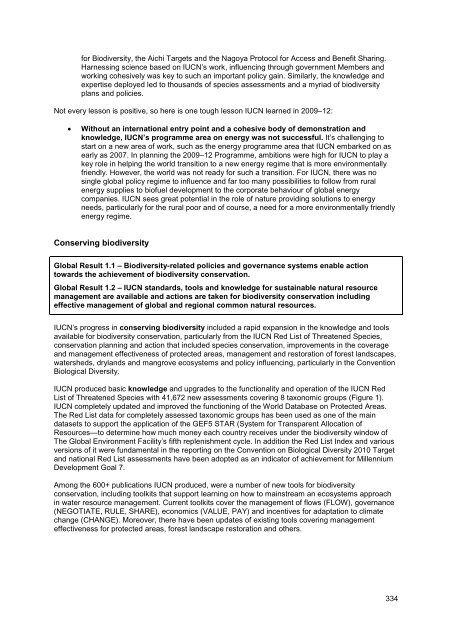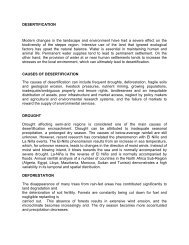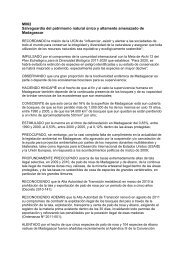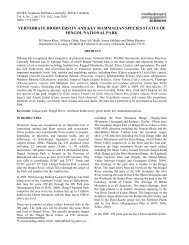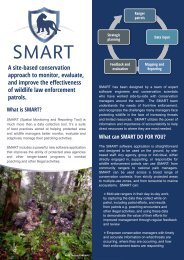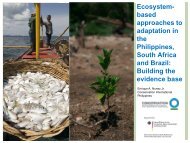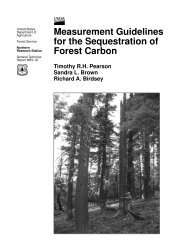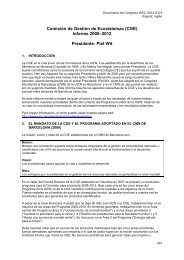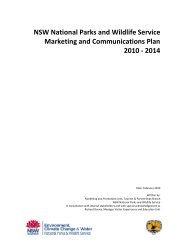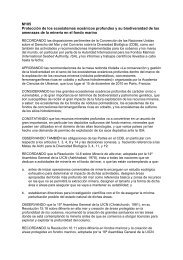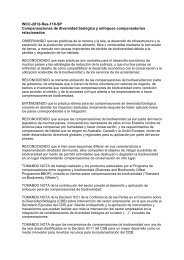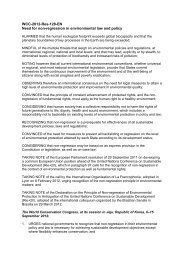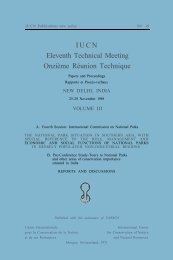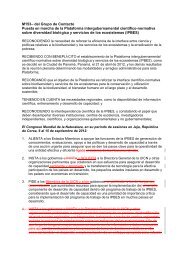Create successful ePaper yourself
Turn your PDF publications into a flip-book with our unique Google optimized e-Paper software.
for Biodiversity, the Aichi Targets and the Nagoya Protocol for Access and Benefit Sharing.Harnessing science based on <strong>IUCN</strong>’s work, influencing through government Members andworking cohesively was key to such an important policy gain. Simi<strong>la</strong>rly, the knowledge an<strong>de</strong>xpertise <strong>de</strong>ployed led to thousands of species assessments and a myriad of biodiversityp<strong>la</strong>ns and policies.Not every lesson is positive, so here is one tough lesson <strong>IUCN</strong> learned in 2009–12:• Without an international entry point and a cohesive body of <strong>de</strong>monstration andknowledge, <strong>IUCN</strong>’s programme area on energy was not successful. It’s challenging tostart on a new area of work, such as the energy programme area that <strong>IUCN</strong> embarked on asearly as 2007. In p<strong>la</strong>nning the 2009–12 Programme, ambitions were high for <strong>IUCN</strong> to p<strong>la</strong>y akey role in helping the world transition to a new energy regime that is more environmentallyfriendly. However, the world was not ready for such a transition. For <strong>IUCN</strong>, there was nosingle global policy regime to influence and far too many possibilities to follow from ruralenergy supplies to biofuel <strong>de</strong>velopment to the corporate behaviour of global energycompanies. <strong>IUCN</strong> sees great potential in the role of nature providing solutions to energyneeds, particu<strong>la</strong>rly for the rural poor and of course, a need for a more environmentally friendlyenergy regime.Conserving biodiversityGlobal Result 1.1 – Biodiversity-re<strong>la</strong>ted policies and governance systems enable actiontowards the achievement of biodiversity conservation.Global Result 1.2 – <strong>IUCN</strong> standards, tools and knowledge for sustainable natural resourcemanagement are avai<strong>la</strong>ble and actions are taken for biodiversity conservation includingeffective management of global and regional common natural resources.<strong>IUCN</strong>’s progress in conserving biodiversity inclu<strong>de</strong>d a rapid expansion in the knowledge and toolsavai<strong>la</strong>ble for biodiversity conservation, particu<strong>la</strong>rly from the <strong>IUCN</strong> Red List of Threatened Species,conservation p<strong>la</strong>nning and action that inclu<strong>de</strong>d species conservation, improvements in the coverageand management effectiveness of protected areas, management and restoration of forest <strong>la</strong>ndscapes,watersheds, dry<strong>la</strong>nds and mangrove ecosystems and policy influencing, particu<strong>la</strong>rly in the ConventionBiological Diversity.<strong>IUCN</strong> produced basic knowledge and upgra<strong>de</strong>s to the functionality and operation of the <strong>IUCN</strong> RedList of Threatened Species with 41,672 new assessments covering 8 taxonomic groups (Figure 1).<strong>IUCN</strong> completely updated and improved the functioning of the World Database on Protected Areas.The Red List data for completely assessed taxonomic groups has been used as one of the maindatasets to support the application of the GEF5 STAR (System for Transparent Allocation ofResources—to <strong>de</strong>termine how much money each country receives un<strong>de</strong>r the biodiversity window ofThe Global Environment Facility’s fifth replenishment cycle. In addition the Red List In<strong>de</strong>x and variousversions of it were fundamental in the reporting on the Convention on Biological Diversity 2010 Targetand national Red List assessments have been adopted as an indicator of achievement for MillenniumDevelopment Goal 7.Among the 600+ publications <strong>IUCN</strong> produced, were a number of new tools for biodiversityconservation, including toolkits that support learning on how to mainstream an ecosystems approachin water resource management. Current toolkits cover the management of flows (FLOW), governance(NEGOTIATE, RULE, SHARE), economics (VALUE, PAY) and incentives for adaptation to climatechange (CHANGE). Moreover, there have been updates of existing tools covering managementeffectiveness for protected areas, forest <strong>la</strong>ndscape restoration and others.334


